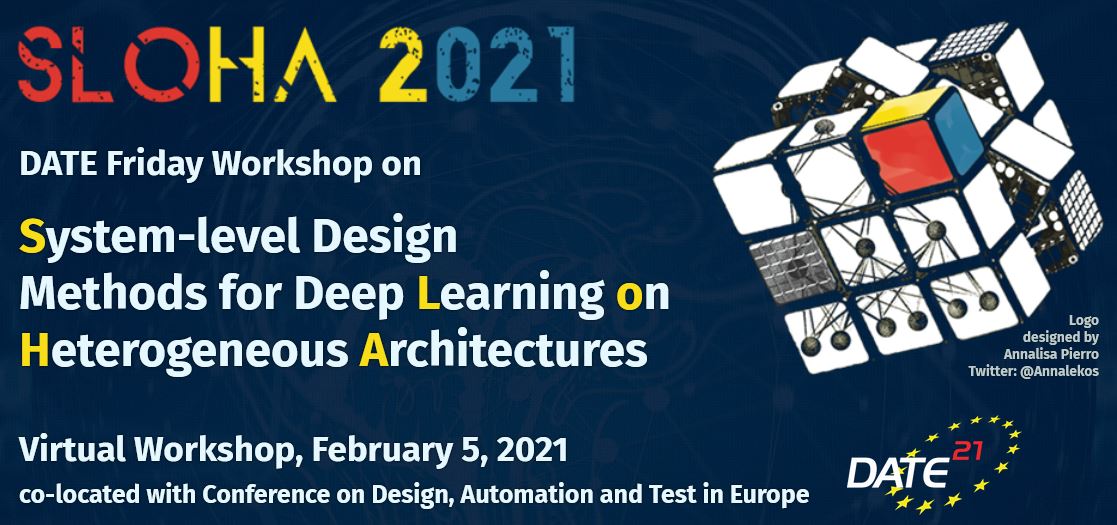
The ALOHA consortium will propose several presentations of the ALOHA framework during SLOHA 2021, which is co-located with Date Conference 2021 (Conference on Design, Automation and Test in Europe).
Overview and scope:
Machine learning, particularly deep learning (DL), is the most quickly growing domain of artificial intelligence. DL is being applied in more and more disciplines for recognition, identification, classification, and prediction tasks. A large part of the activities is focused on image, video and speech processing, but more general signal processing tasks also benefit from DL.
Prominent application areas and markets include human-machine interaction using vocal commands, biological signals processing on wearable devices for medical and fitness applications, visual environment understanding applications such as those used in robotics and advanced driver assistance systems, or predictive maintenance in industrial automation. These applications are often embedded into a broader technical context, imposing stringent constraints on power and size. Thus, many applications should be executed on highly customized heterogeneous low-power computing platforms at the edge.
While on the one hand, there exists a large zoo of DL models and tools that target standard hardware platforms, there are many challenges when targeting heterogeneous and edge devices on the other hand. Several software and hardware design choices have to be made when developing such systems. How to automate the search for and efficiently deploy or synthesize a neural network on multiple target platforms, such as different heterogeneous low-power computing platforms and edge devices? How should the neural network look like to achieve the best possible result on a given hardware platform with limited computing power and energy budget?
The workshop's primary goal is to address these research questions and facilitate the implementation of DL applications on heterogeneous low-power computing platforms and edge devices, including accelerators such as (embedded) GPUs, FPGAs, CGRAs, and TPUs.
Topics of the SLOHA Workshop include, but are not limited to:
- System-level design methods (e.g., scheduling, mapping) for DL
- Design space exploration and optimization (accuracy, performance, energy efficiency, robustness, security and other non-functional properties)
- Modeling of hardware-agnostic neural networks
- Deep compression, quantization and pruning techniques for edge devices
- Heterogeneous computing platforms, edge devices, neuromorphic hardware for DL
- Modeling of DL target platforms
- Compilers, code generators, and synthesis tools for deployment
- Signal processing applications, use cases, and best practices
The workshop will also present some of the methods, tools, architectures, and results achieved in the European Union's Horizon 2020 project ALOHA (https://www.aloha-h2020.eu) and the KISS project (https://www.iis.fraunhofer.de/kiss) funded by the German Federal Ministry of Education and Research.
Program:
